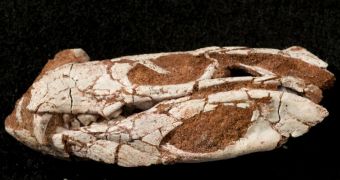A team of international paleontologists announces the discovery of a new species of crocodile, that lived more than 105 million years ago. The finding sheds new light on the past diversity of crocodile species, which apparently occupied some very important niches in the past. The fossilized remains of the creature were discovered under a Tanzanian riverbank, in the Great East African Rift System. This is where the ground is being pulled apart by tectonic plate motions, giving birth to a new sea.
The cat-sized crocodile was discovered inside a mid-Cretaceous rock, but the most interesting thing about it was undoubtedly the fact that it sported mammal-like teeth. This came as a shock for the research team, as experts never considered that these animals could resemble their warm-blooded relatives so closely. However, biologists are now forced to consider a scenario in which the entire Southern Hemisphere was laden with various crocodile species during the Cretaceous.
The scientists, who were led by experts at the University of Ohio, say that the ancient crocodiles most likely filled the same ecological niches that were filled by mammals in the Northern Hemisphere. The discovery also lends additional credence to recently-developed theories, which state that land-based lifestyles made crocodiles reach such a high degree of diversity. The science group, led by OU expert Patrick O'Connor, publishes the results of its investigation in the August 5 issue of the esteemed scientific journal Nature. The work was sponsored partially by the US National Science Foundation (NSF).
“At first glance, this croc is trying very hard to be a mammal. [Though clearly a reptile, a] number of characteristics of this new species – including a reduction in its total number of teeth and a dentition specialized into ones similar to canines, premolars and occluding molars – are very similar to features that were critical during the course of mammalian evolution from the Mesozoic into the Cenozoic,” the team leader explains. The new species was named Pakasuchus kapilimai.
“The presence of morphologically bizarre and highly specialized notosuchian crocodyliforms like Pakasuchus in the southern landmasses, along with an apparently low diversity of mammals in the same areas, has potentially profound ecological implications. This entire group of crocodiles deviates radically from the 'typical' crocodile, most notably in their bizarre dentitions, demonstrating a diversification not seen in the Northern Hemisphere during this time interval,” says Stony Brook University expert Joseph Sertich, who collaborated on the investigation.

 14 DAY TRIAL //
14 DAY TRIAL //